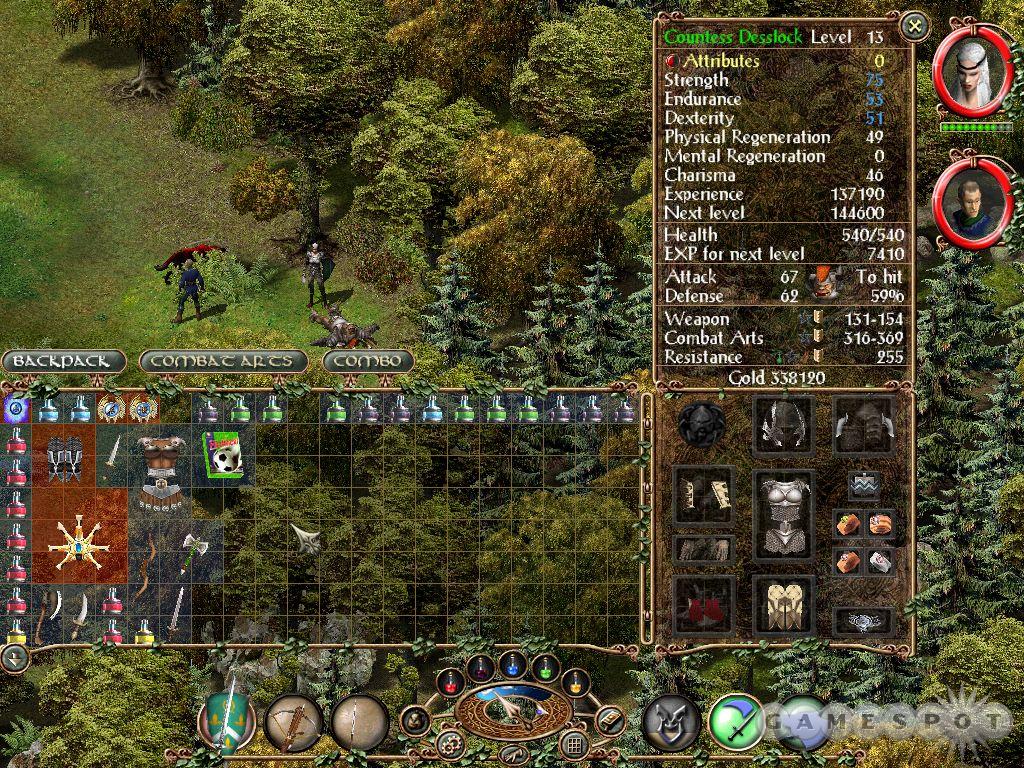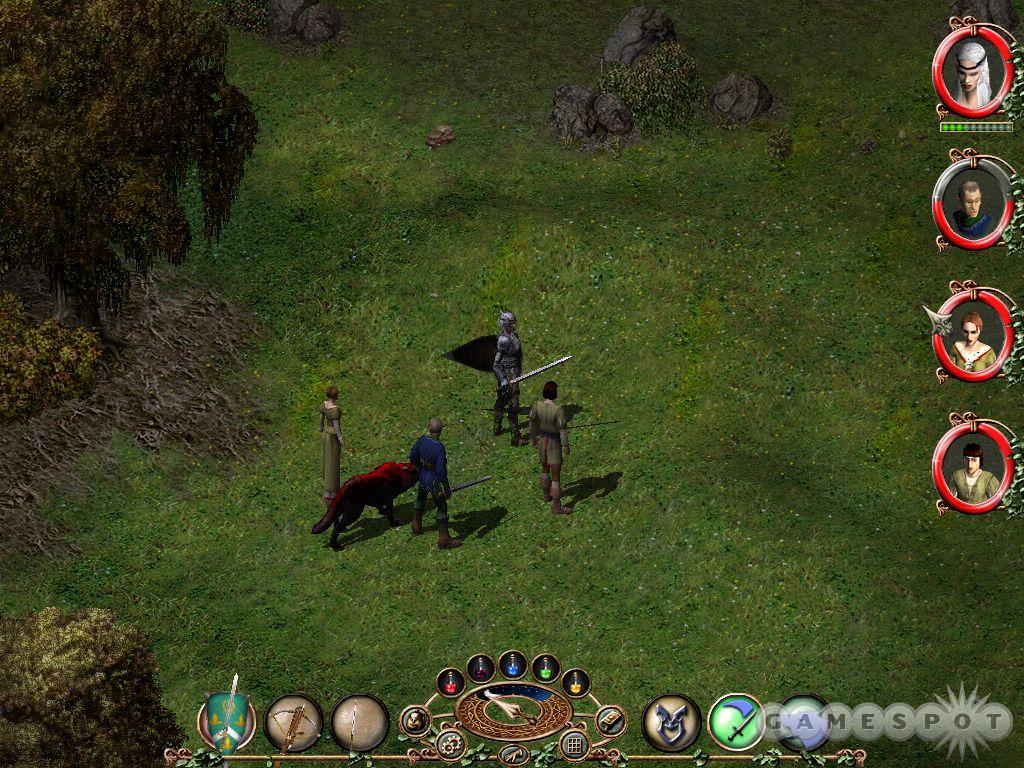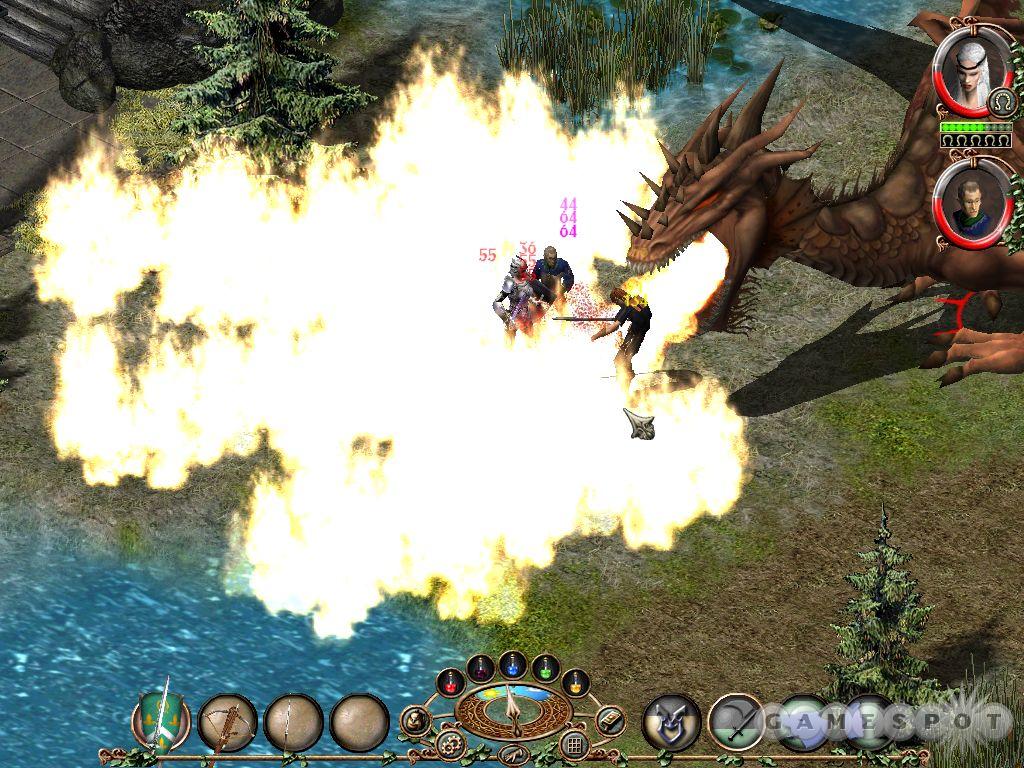Sacred is a great-looking, generally solid action role-playing game that provides a few interesting gameplay innovations. It features an open-ended gaming world to explore, decent cooperative and competitive multiplayer options, and a good mix of goal-oriented questing and fast-paced battles. But its combat system is also somewhat finicky and unrewarding, which is a significant problem for what's fundamentally a hack-and-slash RPG.

It would be artificial to describe Sacred without at least a cursory comparison to the Diablo games, since Sacred was clearly heavily inspired by that series. As in the Diablo games, each of the six character types in Sacred has a predetermined gender and a distinct selection of skills you can choose to develop. Most foes only take a few mouse clicks to dispatch, but you'll encounter hundreds of enemies, including types that will spawn more of their kin if you don't take them out. The monsters are all classic fantasy stereotypes, such as undead, dragons, and ogres; you can use the Alt key to highlight and quickly locate the seemingly endless bounties of loot they hoard. There's a huge variety of magical items, including sets of related items to collect, upgradable socketed items, and class-specific artifacts. You'll maintain a chest "stash" in towns, where you can store some of your accumulated swag, and you can hook up with companions who will provide some temporary assistance, though you don't directly control them. You can replay the storyline at progressively difficult skill levels. Those features make Sacred sound very similar to Diablo II, and in many ways it is, but Sacred also has its share of innovations.
The most notable improvement Sacred offers over other hack-and-slash RPGs is its huge, open-ended gameworld. While other action RPGs funnel you through their settings in a linear fashion, Sacred offers largely free-form exploration. Settings are largely noninteractive, but meticulously detailed, and environments are well varied and consistently interesting to explore. Sacred's graphics are a definite strength, and they're significantly better than Diablo II's aged visuals, although they're not quite as good as Dungeon Siege's. Graphical resolution is locked at 1024x768, but Sacred lets you seamlessly zoom in the camera perspective for a more intimate look at the action. While similar features in other games have been of dubious utility, Sacred's variable perspective works exceptionally well, letting you both view your predicament from a strategic, distant vantage point and then conveniently adjust to a more rewarding ringside view of the battles. The auto-mapping function nicely complements the open-ended gaming world design by granting you a thorough overview of the areas you've explored. Sacred's interface includes convenient features, such as a circle around your character that graphically reveals current hit points, so you don't have to take your eyes off the action to steal glances at readouts further from the action.

Several of Sacred's other distinctive features are interesting, but they aren't entirely successful at improving gameplay. You can buy a horse to speed travel and garner an additional defensive bonus in combat, but it's difficult to effectively engage opponents from horseback, and characters (with the notable exception of the wood elf) lose access to several of their best character skills when riding. A couple of the character types are particularly novel (the vampiress and angelic seraphim), but there is a considerable overlap of special attack skills among characters. Characters have basic attributes, skills, and special attacks/spells. Increases to attributes are largely automatically determined by character type, although you're given the nominal choice to increase one attribute stat by a single point each experience level.
Skills are passive traits that grant characters additional proficiency in certain actions such as horse riding. The skills are universally available to all characters; however, when they initially become available is determined by character type. Instead of being allocated points to acquire new special attacks or spells when you advance character levels, you bump up those abilities through finding related icons as treasure drops or by trading in groups of other characters' icons. Improving special attacks will make them more powerful, but the improvements are largely statistical rather than visceral, and you won't be able to use upgraded abilities as frequently unless you also allocate points to related skills. Special attacks and spells aren't organized in skill trees with prerequisites, and you are never prevented from increasing those abilities, but that flexibility tends to just make characters less distinctive and ironically makes the game less replayable.

Instead of allowing you to immediately hotkey your different special attacks/spells, Sacred effectively restricts the number of available hotkeys based upon your character's level. Initially, you'll be able to hotkey only a single special attack, although that number will eventually increase to five. You can also hotkey a similar number of weapons to equip. In addition, you can group special attacks into combinations, which sounds intriguing, but in practice there's little reason to do more than combine multiple incidences of your best attack. There are no fewer than five different, unstackable potion types, but the more original potions (there's one that keeps the undead you kill in the ground, for instance) tend to annoyingly clutter up your character's inventory more than they enhance gameplay. In order to ensure Sacred received a Teen ESRB rating, North American purchasers have been provided with a version of the game that strips out the gore and graphical violence that's a feature of the European version of the game. While that may not be a meaningful deletion to some purchasers, it certainly would have been preferable to provide gamers with at least the option of playing the game as the developers originally intended.
More importantly, Sacred's combat system frequently feels finicky, and if you don't micromanage your character's individual attacks it's too easy for your character to either fail to line up an attack (particularly on horseback) or to stop attacking altogether. The game doesn't effectively convey a consistent sense that your character is hitting something, which is both dissatisfying and occasionally frustrating. It's a significant annoyance, as your character is constantly fighting and it's difficult to advance even short distances without becoming embroiled in battles with dozens of opponents. Gameplay is never as addictive or rewarding as it should be, since combat is the game's primary focus and it frequently becomes more of a tedious chore than a thrilling, fast-paced experience.

Sacred has a comprehensive suite of multiplayer options, including an Internet-hosting service similar to Blizzard's Battle.net. You can team up with up to three other players to fight the game's main campaign, or you can fight in up to 16-player hack-and-slash duels. Perhaps because players are wary of the cheats that plagued Diablo II, it's difficult to find many open games at Encore's servers. Multiplayer Sacred is lacking some polish in general, as lag occurs too frequently and there isn't a decent trading interface. Sacred has a few minor bugs, such as broken subquests and placeholder dialogue text, but bugs tend to pop up more frequently in multiplayer games.
In comparison to some of its hack-and-slash RPG peers, Sacred is in some ways definitely a deeper RPG than Dungeon Siege or Diablo, since it's less linear and quests are more frequent and varied, but its gameplay isn't as polished as in those games. Sacred is a welcome addition to the genre that distinguishes itself by incorporating a few novel gameplay tweaks. However, the game's success is ultimately limited by an unrewarding character development system and by combat that is too frequently tedious rather than engaging.